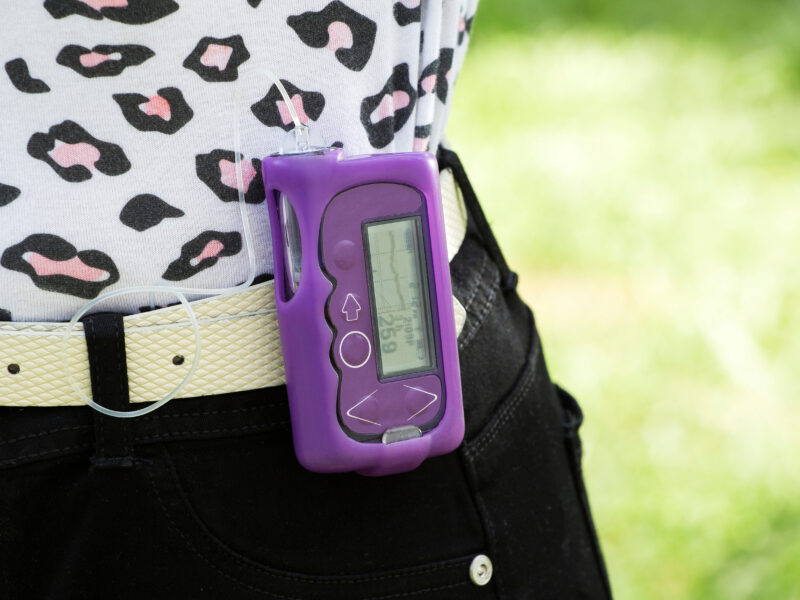Using Metrics to Improve the Delivery of Optimal Diabetes Care for Children With Type 1 Diabetes
Using Metrics to Improve the Delivery of Optimal Diabetes Care for Children With Type 1 Diabetes https://pediatricsnationwide.org/wp-content/uploads/2020/06/061413bs149-toddler-header-1024x575.gif 1024 575 JoAnna Pendergrass, DVM JoAnna Pendergrass, DVM https://pediatricsnationwide.org/wp-content/uploads/2021/03/pendergrass_01.jpg- June 04, 2020
- JoAnna Pendergrass, DVM

The Type 1 Diabetes Care Index is a new metric that tracks the delivery of diabetes care, with the goal to reach zero missed opportunities to deliver quality care.
The complexity and chronicity of pediatric type 1 diabetes (T1D) necessitate a coordinated, multidisciplinary effort to effectively deliver the optimal standards of diabetes care, as outlined by the American Diabetes Association (ADA) and International Society for Pediatric and Adolescent Diabetes (ISPAD).
Tracking delivery of this care can identify shortfalls and encourage specific interventions to improve the delivery of quality care. However, tracking that care can be burdensome and time consuming.
Kathryn Obrynba, MD, a pediatric endocrinologist at Nationwide Children’s Hospital, and her research team designed and implemented a novel T1D care index (T1DCI) to track the delivery of optimal T1D care within the hospital’s diabetes program. Their findings were recently published in Pediatric Diabetes.
“An overall improvement was observed by tracking the index,” Dr. Obrynba says, “meaning that there were fewer missed opportunities to deliver care.”
Using the ADA and ISPAD guidelines, Dr. Obrynba and her team first identified 11 elements of optimal diabetes care, then grouped the elements into three categories: patient-centered multidisciplinary care, monitoring for co-morbidities/preventative screening, and psychosocial support.
“The elements of care were generally agreed upon by local and national experts as elements that should be delivered to any child with type 1 diabetes,” she says.
Educating the clinical care staff on the index was necessary. “We needed to make sure that the staff understood that the index wasn’t punitive, but it would be used to determine what to pay more attention to in terms of care,” Dr. Obrynba says.
For the study’s baseline period (January–December 2017), the research team retrospectively reviewed the electronic medical records (EMR) of patients with T1D to tally the number of missed opportunities to deliver optimal diabetes care. During the intervention period (January–December 2018), the cumulative number of missed opportunities was tallied for each care element each month.
By the end of the intervention period, there was a 26% overall reduction in the number of missed care opportunities.
“Tracking opened our eyes as to how care processes were being implemented to provide optimal diabetes care,” Dr. Obrynba says.
Several care elements demonstrated marked reductions during the intervention period. The largest reduction (74%) was observed with clinic accessibility, attributed to automatically scheduling follow-up appointments at check-in. The second-largest reduction (53%) was observed with the after-clinic summary, attributed to auto-populating the after-visit summary in the EMR.
Other care elements demonstrated an increase in missed opportunities during this period, however. For example, missed opportunities for depression screenings increased by 129% because of a shortage of social workers to perform the screenings.
“Near the end of intervention period, we instituted a process change to flag when patients were due for their depression screenings,” Dr. Obrynba says. These patients completed the screening at check-in, independent of a social worker.
Several high-level process changes were also implemented. A pre-visit planning board provided a daily clinic-level overview of which care elements each patient needed that day. An electronic dashboard within each patients’ EMR tracked delivery of care.
Although not all 11 care elements demonstrated a reduction in missed opportunities, Dr. Obrynba says that the index’s real success was the ability to track delivery of care and identify these missed opportunities.
With the shift to telemedicine because of the COVID-19 pandemic, Dr. Obrynba and her team are re-evaluating how to continue delivering optimal diabetes care within telemedicine’s confines.
Looking ahead, the T1DCI can be adapted for use with other complex and chronic conditions, with the ultimate goal being zero missed opportunities to deliver optimal care.
Reference:
Obrynba KS, Indyk JA, Gandhi KK, Buckingham D, Kamboj MK. The diabetes care index: A novel metric to assess delivery of optimal type 1 diabetes care. Pediatric Diabetes. 2020;21:637–43.
Image credit: Adobe Stock
About the author
JoAnna Pendergrass, DVM, is a veterinarian and freelance medical writer in Atlanta, GA. She received her veterinary degree from the Virginia-Maryland College of Veterinary Medicine and completed a 2-year postdoctoral research fellowship at Emory University’s Yerkes Primate Research Center before beginning her career as a medical writer.
As a freelance medical writer, Dr. Pendergrass focuses on pet owner education and health journalism. She is a member of the American Medical Writers Association and has served as secretary and president of AMWA’s Southeast chapter.
In her spare time, Dr. Pendergrass enjoys baking, running, and playing the viola in a local community orchestra.
-
JoAnna Pendergrass, DVMhttps://pediatricsnationwide.org/author/joanna-pendergrass-dvm/
-
JoAnna Pendergrass, DVMhttps://pediatricsnationwide.org/author/joanna-pendergrass-dvm/
-
JoAnna Pendergrass, DVMhttps://pediatricsnationwide.org/author/joanna-pendergrass-dvm/
-
JoAnna Pendergrass, DVMhttps://pediatricsnationwide.org/author/joanna-pendergrass-dvm/
- Post Tags:
- Diabetes
- Endocrinology
- General Pediatrics
- Posted In:
- In Brief









